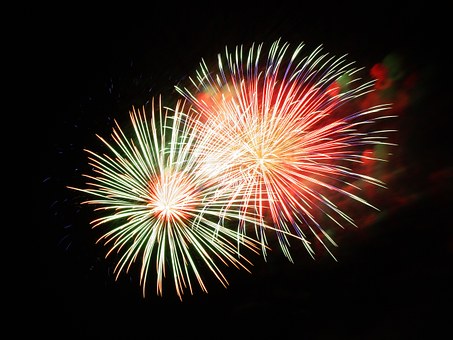Does it seem like it’s been too long since Memorial Day kicked off the summer season? The Fourth of July comes around just as we’re ready for another party. Along with beaches, barbecues and beer come the traditional fireworks to commemorate our victory in that long ago battle for independence. But while we’re filling coolers and slathering on the sunscreen, doctors and emergency rooms around the country are gearing up for fireworks related injuries.
 The American Academy of Ophthalmology (AAO) warns that eye injuries associated with fireworks include ruptured globe, chemical and thermal burns, corneal abrasions and retinal detachment. They remind us that even sparklers, which most people considered to be relatively benign, burn at temperatures of up to 2000 degrees. They note that almost half of injuries from fireworks are to bystanders, and 35% of those injuries are to children under age 15.
The American Academy of Ophthalmology (AAO) warns that eye injuries associated with fireworks include ruptured globe, chemical and thermal burns, corneal abrasions and retinal detachment. They remind us that even sparklers, which most people considered to be relatively benign, burn at temperatures of up to 2000 degrees. They note that almost half of injuries from fireworks are to bystanders, and 35% of those injuries are to children under age 15.Equally cautionary statistics come from the U.S. Consumer Product Safety Commission’s 2016 Fireworks Annual Report, released last summer. The report notes that 9% of all fireworks related injuries are to eyes, with contusions, lacerations and foreign bodies as the most frequent.
Considering the risk of injury from fireworks, all consumer fireworks are banned in only two states: Massachusetts and Delaware. Twenty-nine states allow all or most types of consumer fireworks, what the Consumer Product Safety Commission defines as having up to 500 grams of composition (pyrotechnic ingredients) and up to 50 milligrams of flash powder. These products range from sparklers to sky rockets. Sixteen states restrict fireworks to what are called “safe and sane,” which are non-aerial and non-explosive. The remaining states have varied regulations, some vary even by county.
From that information, we can presume that most people will be viewing or using fireworks this Fourth. Here are some safety tips from the AAO to share with your patients, friends and families. Leave fireworks displays to the professionals and view them from behind safety barriers at least 500 feet away. At home, keep fireworks away from children, and adults handling them should wear protective eyewear. In the event of an eye injury, seek immediate medical attention, do not rub, rinse, or apply pressure to the injury. Do not apply ointments or administer aspirin or ibuprofen for pain.
Contact lenses can provide a therapeutic benefit in some eye injury cases. You can learn more about those benefits from our CE, Therapeutic Contact Lenses and Beyond at 2020mag.com/ce. Have a safe and happy Fourth of July!













